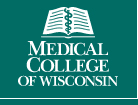Biologically Assisted Core Decompression of the Femoral Head Using the PerFuse Instrument and BioCUE
| Status: | Enrolling by invitation |
|---|---|
| Healthy: | No |
| Age Range: | 18 - Any |
| Updated: | 1/12/2019 |
| Start Date: | March 2016 |
| End Date: | March 2023 |
Post-Market Data Collection for Biologically Assisted Core Decompression of the Femoral Head Using the PerFuse Instrument and BioCUE
This study will evaluate the performance of biologically assisted core decompression with the
PerFuse instrument and BioCUE in patients with bone lesions in the femoral head. The study
will explore the potential impact of patient demographics and baseline characteristics on
post-operative outcomes.
PerFuse instrument and BioCUE in patients with bone lesions in the femoral head. The study
will explore the potential impact of patient demographics and baseline characteristics on
post-operative outcomes.
This study will evaluate the performance of biologically assisted core decompression with the
PerFuse instrument and BioCUE in patients with bone lesions in the femoral head. The study
will explore the potential impact of patient demographics and baseline characteristics on
post-operative outcomes. The study will evaluate change in Harris Hip Score (HHS) at 12
months after treatment. The change in AVN lesion size will also be measured at 12 months
after index treatment via MRI. Change in quality of life and pain measures will be measured
at each follow-up. Adverse events will also be recorded throughout the study.
This study will follow patients for 5 years after initial treatment.
Data will be recorded in a online database that will be entered by the site or patient,
depending on the report form. This database includes data checks to compare entered data
against predefined rules for range.
A risk-based monitoring plan will be put in place for source data verification.
PerFuse instrument and BioCUE in patients with bone lesions in the femoral head. The study
will explore the potential impact of patient demographics and baseline characteristics on
post-operative outcomes. The study will evaluate change in Harris Hip Score (HHS) at 12
months after treatment. The change in AVN lesion size will also be measured at 12 months
after index treatment via MRI. Change in quality of life and pain measures will be measured
at each follow-up. Adverse events will also be recorded throughout the study.
This study will follow patients for 5 years after initial treatment.
Data will be recorded in a online database that will be entered by the site or patient,
depending on the report form. This database includes data checks to compare entered data
against predefined rules for range.
A risk-based monitoring plan will be put in place for source data verification.
Inclusion Criteria:
- Willing and able to comply with the study procedures
- Signed informed consent
- Untreated unilateral or bilateral bone lesion(s) of the femoral head associated with
AVN in need of biologically assisted core decompression. Note:If bilateral untreated
bone lesions of the femoral head associated with AVN,both hips eligible and willing to
undergo study treatment and follow-up
- ≥ 3 months after arthroplasty (e.g., total, hemi) in the contralateral hip
Exclusion Criteria:
- Pregnant or lactating
- Participating in another device or drug study
- ARCO stage ≥ III
- Unable to undergo MRI of the study hip(s)
- Active, local or systemic infection
We found this trial at
3
sites
Medical College of Wisconsin The Medical College (MCW) of Wisconsin is a major national research...
Click here to add this to my saved trials
Click here to add this to my saved trials
Click here to add this to my saved trials
